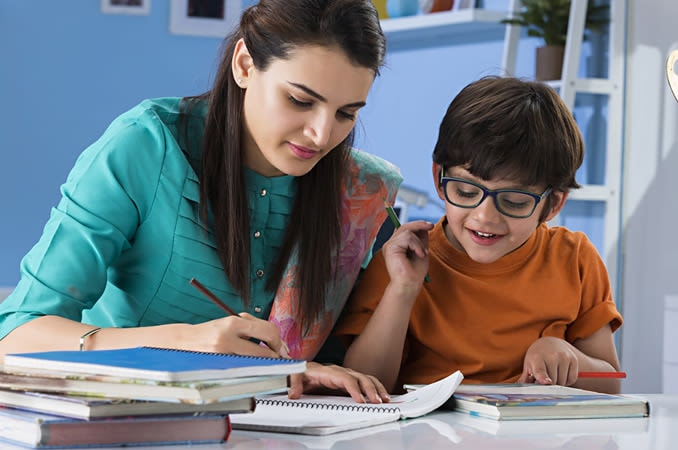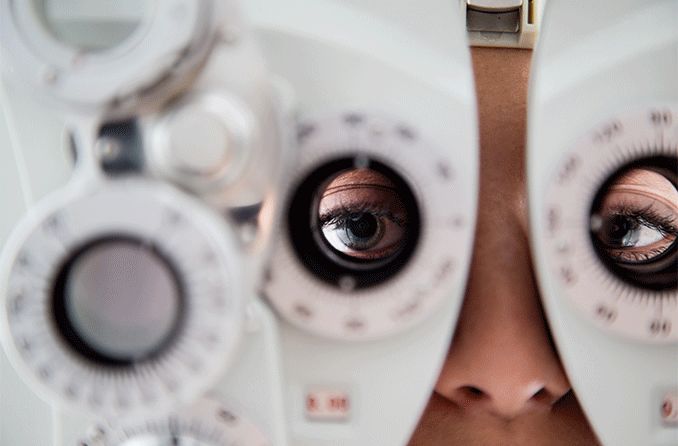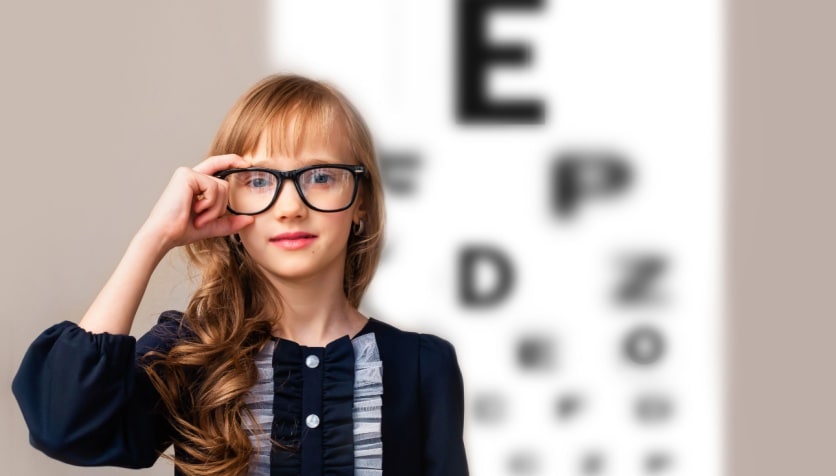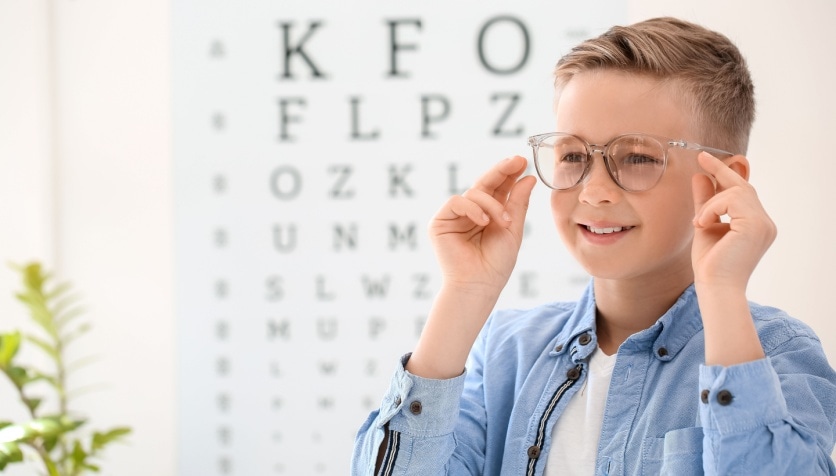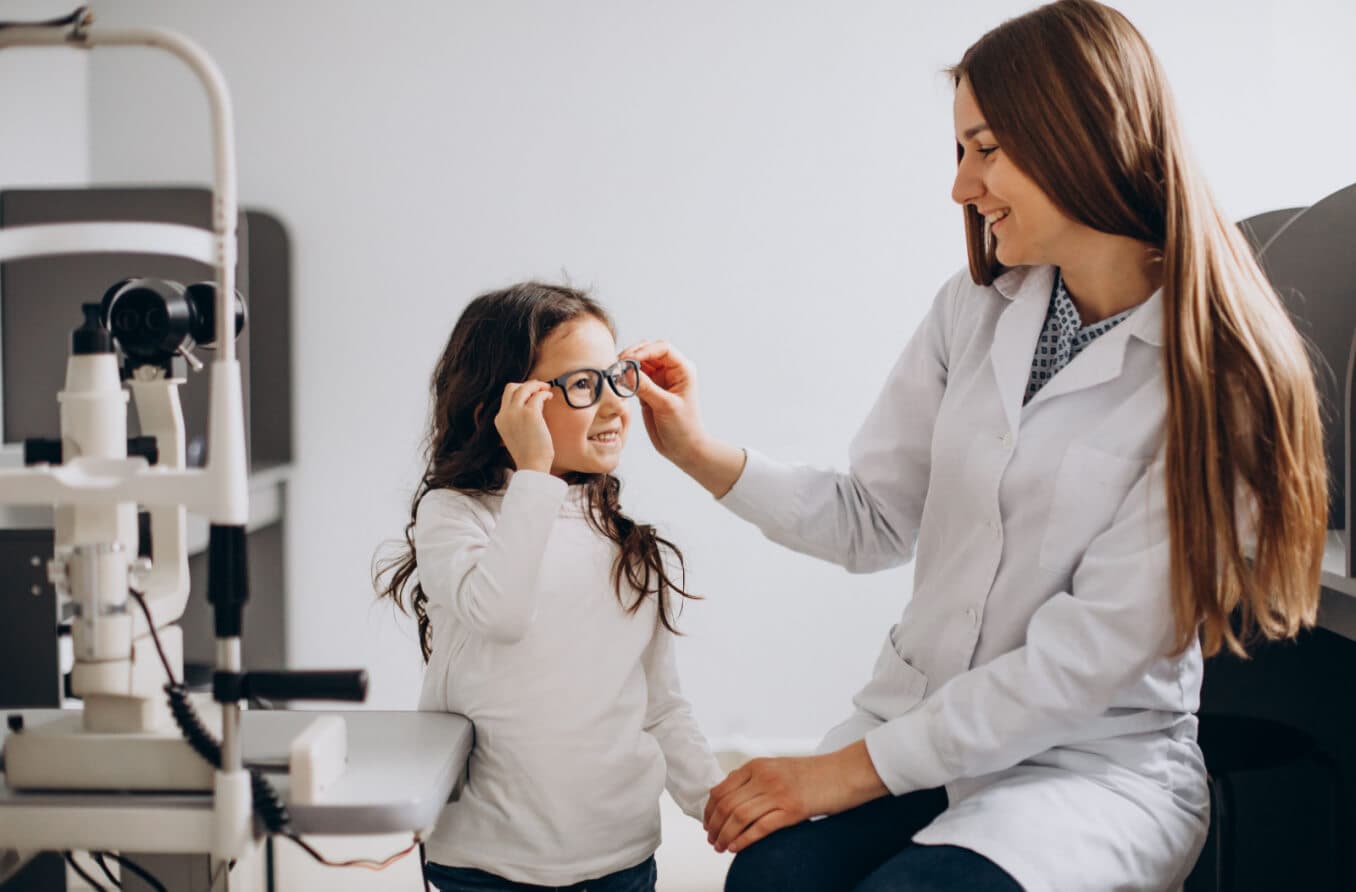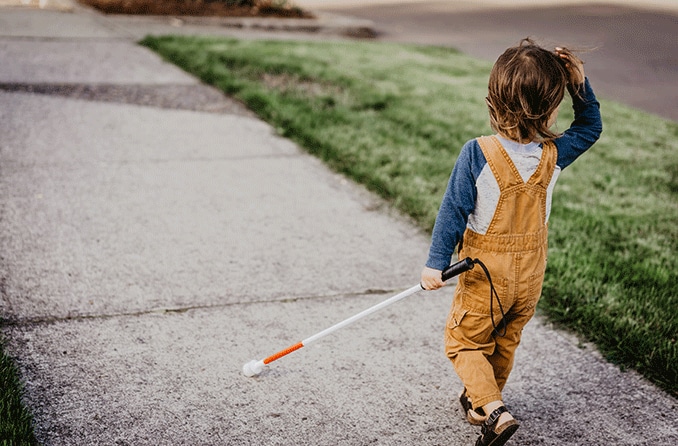What is progressive myopia in children?
Progressive myopia in children is nearsightedness that requires higher correction every year. The specific causes are not yet fully understood. Risk factors include genetics, reduced time spent outdoors, extended periods of near work at close viewing distances and some underlying medical conditions.
What happens to the eyes in progressive myopia?
As children’s bodies develop, their eyes develop as well. At birth, most babies are nearsighted. As they grow, children’s eyes undergo a process called “emmetropization.” This process ensures that the length of the eye and the curvature of the cornea and lens are balanced so that vision is clear.
In some children, the eyeball elongates too much and too quickly. Less commonly, the curvature of the cornea or lens becomes too steep. When this occurs, the child has developed myopia. If, at each eye exam, the child’s prescription increases as nearsightedness rapidly progresses, the child is considered to have progressive myopia. If the prescription increases above –6.00 diopters, the child is considered to be a “high myope.”
Myopia progression in children is usually due to axial myopia. This is the most common form of myopia and is due to excessive axial elongation. The axial length of the eyeball is the distance from the cornea to the back of the eye. When the eyeball is too long, relative to the focusing power of the cornea and lens, light rays entering the eye from the distance come to a focus in front of the retina, causing blur.
What are the risk factors for progressive myopia?
There are several risk factors associated with progressive myopia in children. As research into myopia continues, new insights will continue to develop. These associations have been suggested to date:
Heredity
Studies have found that when both parents of a child have myopia, a child has a much higher chance of being myopic. Additionally, a recent review of the prevalence of myopia around the world has found that the risk of myopia is 3X higher in children who have a parent with myopia.
As such, it has become widely accepted that there is a clear association between the risk of progressive myopia in children and a child’s genetics.
Too little outdoor exposure
According to a 2019 meta-analysis of outdoor exposure and myopia, outdoor light exposure was found to decrease three main indicators of myopia:
50% decrease in incidence of myopia
33% decrease in refractive error
25% decrease in eyeball growth
Researchers have found that spending time outdoors for 10-14 hours a week (or about 2 hours a day) seems to be effective in reducing the risk of myopia. This is true even in children who have two myopic parents and spend a lot of time doing near work.
Scientists continue to investigate whether time of day and amount of daylight plays a role.
Eye doctors have begun to recommend that children spend 80-120 minutes (about 2 hours) outside each day to decrease the risk of myopia development. Spending more time outdoors is not only healthy for growing bodies, it seems to be healthy for growing eyeballs as well.
Extended near work at close distances without visual breaks
A number of studies have found a connection between excessive near work and myopia development. Other studies have not found a strong correlation.
Although there are conflicting theories about exactly why, or even if, near work is associated with myopia, it is widely accepted that developing good vision habits is beneficial for the eyes.
The International Myopia Institute has stated that near work done at very close distances (< 20cm) and for extended periods (more than 45 minutes) is a risk factor for developing myopia.
As such, eye doctors have begun to make recommendations regarding near work in their clinical practice. These include trying to spend less time on devices, not holding reading material too close and taking visual breaks.
SEE RELATED: Can excessive book reading cause myopia?
Underlying medical conditions
Some rare medical conditions can increase the risk of progressive or high myopia in children. These include:
Stickler’s syndrome
Weill-Marchesani syndrome
Marfan syndrome
Ehlers-Danlos syndrome
Homocystinuria
Noonan syndrome
It is worth noting that if a child has progressive or high myopia, it does not mean that these conditions are present. Consult an eye doctor about your child's medical and ocular history if you have any concerns regarding these conditions.
Type of correction may play a role in myopia progression
Several studies have shown that children who are prescribed multifocal glasses have slower progression of myopia. Children who wear multifocal contact lenses also have a slower progression of myopia according to these studies.
New lens technologies with zones of optical correction show promise in slowing down myopia progression, although they are not yet available in the U.S.
Some eye doctors recommend the use of rigid contact lenses that are worn overnight and correct daytime vision. This is called overnight orthokeratology. This strategy has been shown to be effective in slowing down progressive myopia in some investigations.
What are the risks associated with progressive myopia?
Myopia typically does not have a risk of visual impairment from the refractive error. The concern with progressive myopia is that excessive elongation of the eyeball may result in overstretching of the retina and lead to irreversible vision loss.
In general, the younger a child is when they develop myopia, the more likely they are to have high myopia later in life. This leads to a higher risk of developing vision threatening complications from high myopia such as myopic maculopathy, retinal detachment and optic neuropathy.
The risk of complications due to myopia increases significantly as myopia progresses. As a result, it is important to monitor the progression of a child’s myopia with routine, comprehensive eye exams.
Complications related to continuous progression of myopia include:
Retinal tears – a break in the retina
Retinal detachment – retina separates from the back of the eye
Glaucoma – a condition that can damage the optic nerve
Cataract – a clouding of the natural lens of the eye
Posterior vitreous detachment – a separation of the vitreous gel from the retina
Myopic maculopathy - damage to the macula
Optic neuropathy – damage to the optic nerve
How can I slow down myopia progression in my child?
The first step in slowing down myopia progression in children is to take your child to get a comprehensive eye exam. Speak to your eye doctor about your concerns about your child’s increasing myopia.
Several strategies show promise in clinical trials for slowing myopia progression. These include:
Low-dose atropine drops instilled in the eyes at bedtime
Multifocal and competing defocus glasses and contact lenses
Overnight orthokeratology
In addition, encourage healthy habits in your child such as spending less time looking at devices and more time outdoors.

